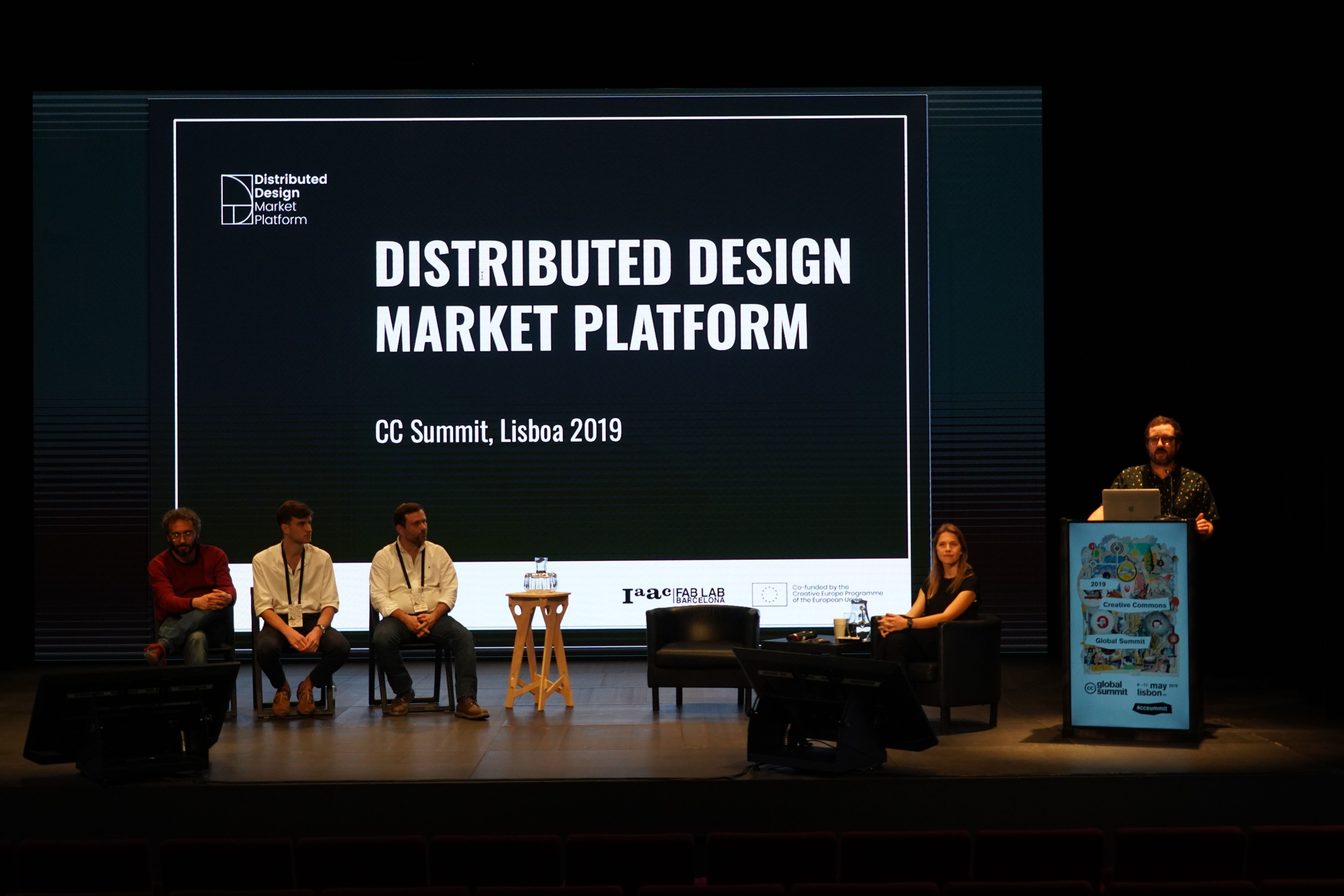Last week for the CC Global Summit hundreds of leading activists, advocates, educators, lawyers, and technologists were gathering to discuss debate and plan the global movement for creative commons. The Distributed Design Market Platform brought together speakers and designers to discuss the concept of Distributed Design and its relation to CC licenses.
How open is Distributed Design really? Is the legal framework applicable to it? Is Distributed Design a Common? Is there a need to create new tools in order to accommodate it in Creative Commons?
A review about our panel discussion, showcasing simple and creative design educational activities and tools as well as open designs to actively improve the quality of life.
ABOUT CREATIVE COMMONS
Creative Commons (CC) helps you to legally share your knowledge and creativity to build a more equitable, accessible and innovative world. It is about unlocking the full potential of the internet to drive a new era of development, growth and productivity. With its global network Creative Commons provides free and easy-to-use copyright licenses to make a simple and standardized way to give the public permission to share and use your creative work on your own conditions.

DISTRIBUTED DESIGN
Speaker: Alessandra Schmidt, EU projects coordinator at Fab Lab Barcelona | Institute of Advanced Architecture of Catalonia, in Barcelona, supports project management for the Distributed Design Market Platform, consults on social and environmental development initiatives, supporting communities’ pathways for social innovation.
The global movement is merging artisanal skills with a digital layer of tools. Move data instead of product – Through this new paradigm we create a global network of collaborators within the design field to exchange data with the aim to create a more sustainable future, lead by the following values:
-
Supportive We promote designers and makers working on new approaches to product development and commercialization
-
Ecosystemic We facilitate an online and offline ecosystem of tools and methods to connect designers, makers, manufacturers and markets.
-
Open We’re into making design accessible by championing culture that benefits makers, designers and consumers to advance the design discipline as a force for change.
Regenerative We’re rethinking traditional production and consumption practices by considering design as a system. From the fabrication to distribution, we’re exploring low kilometre supply chains, open source distribution and thinking carefully about materials.

OPEN DESIGN DEFINITION
Speaker: Massimo Menichinelli, research fellow at RMIT University and doctoral candidate at Media Lab Helsinki (Aalto University), has investigated, lectured, published and worked on the connections between Design and Open Source, Peer-to-Peer, Fab Labs and the Maker movement since 2005.
Open Design is a design artifact project whose source documentation is made publicly available so that anyone can study, modify, distribute, make, prototype and sell the artifact based on that design. In open design processes it is especially important to document the design process in order to acknowledge individual work – open design means to further build and develop work which was previously created by another person, while acknowledging each individual participant inside the process. This is giving people freedom to control their technology while sharing knowledge and encouraging commerce through the open exchange of designs. Transparency, collaboration and release of resources are making everybody aware of the impact on social, economic and environmental dimension of everybody’s life.

POLYTECHNIC INSTITUTE OF LISBON AND FAB LAB BENFICA
Speakers: Andre Rocha, Adjunct Professor at ESELx – IPL and Fab Manager / Scientific Coordinator at Fab Lab Benfica (ESELX-IPL) Currently coordinating the Polytechnic of Lisbon participation at the Distributed Design Market Platform, Open Design Lead for Open Product Design and Maker Community at Creative Commons Portugal;
and Nuno Monge, Product Designer, Co-manager of FabLab Benfica and and Professor at Polytechnic Institute of Lisbon for Product Design, Materials for Design and Innovation.
A good example for open and distributed design activities are being made by Polytechnic Institute of Lisbon and Fab Lab Benfica in Portugal:
OpenFabSchools
Most of the Portuguese Art, Design and Engineering Schools have digital fabrication facilities. Can they become Fab Labs? In the global movement and digital transformation we should not forget the academic, pedagogical and professional impact of it. The discussion lead by Andre Rocha was thematizing the Open Fab School as a space of permanent empowering meaningful contact with other communities.
BiAMA
The institute of Lisbon is currently creating an open and distributed material library, which is gathering open and common protocols to catalogue and show materials and give access to it. Currently over 500 gathered materials are being processed with the aim to give democratic access to professional protocolation.

CAREABLES
Speaker: Erik Kamenjasevic, Legal researcher, KU Leuven, which research focuses on eHealth privacy, data protection, IPRs, and medical devices.
Careables is an open and dedicated platform to share and exchange open healthcare solutions and co-designed experiences with the goal to democratize the access to healthcare solutions.
Objectives are to connect the maker community with citizens, including patients, and healthcare professionals and to co-design open healthcare solutions facing physical disablements, as well as healthcare professionals. The platform is generally aiming an open standard documentation for its designs. The goal is to support the “DIY” healthcare and professionalise its documentation and sharing.
A careable is an open solution that aims to improve the quality of life for people with unmet needs or facing physical limitations. Careables are co-designed, replicable, accessible, adjustable and shareable online, using digital technologies. The platform is forming a new category that promises readily customised solutions and a horizontal and collaborative approach to health and care.
More about the talk here.
